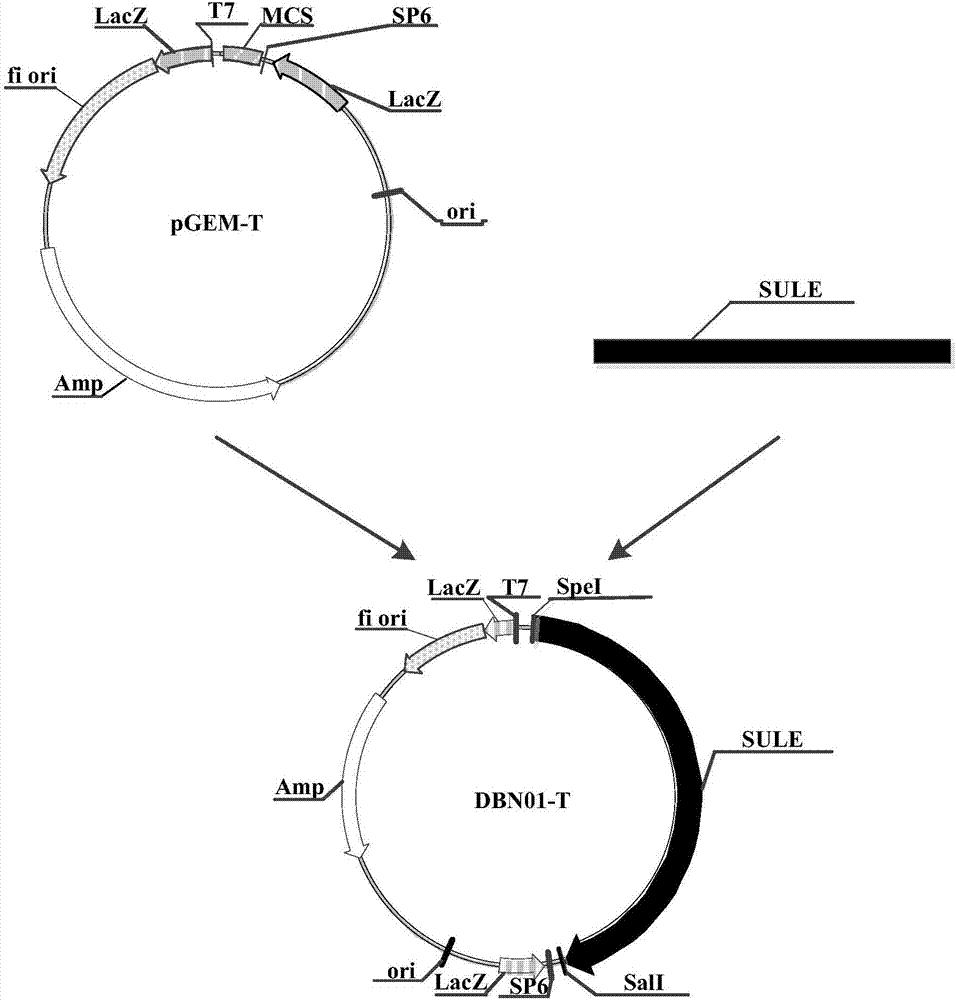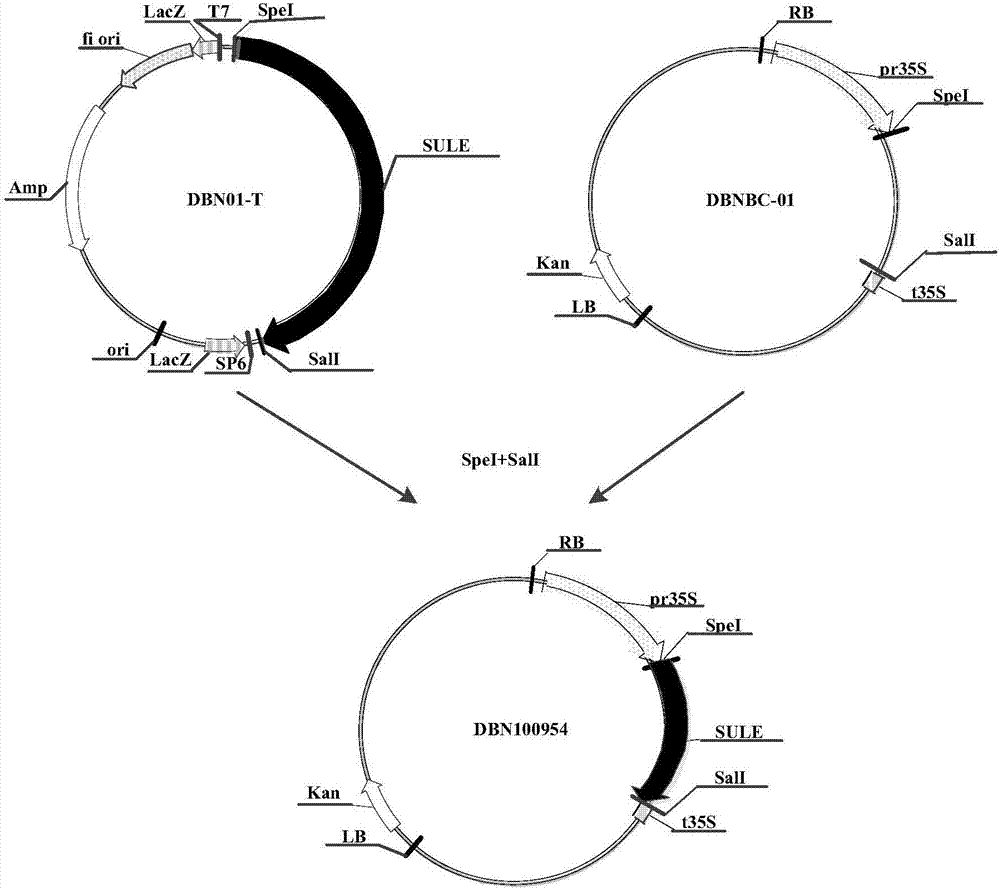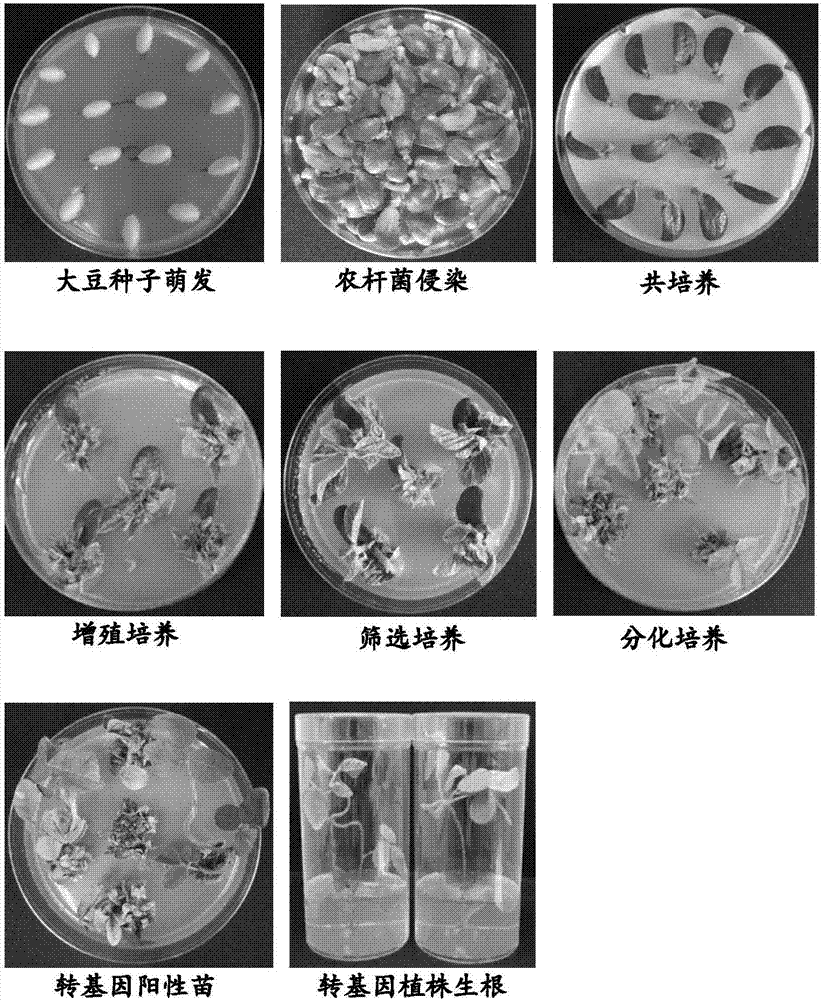Method for improving transformation efficiency of soybean
A technique for transforming soybeans and plants, applied in biochemical equipment and methods, botany equipment and methods, angiosperms/flowering plants, etc., can solve the problems of high false positive plant rate and low transformation efficiency
- Summary
- Abstract
- Description
- Claims
- Application Information
AI Technical Summary
Problems solved by technology
Method used
Image
Examples
no. 1 example
[0140] The first embodiment, construction of recombinant expression vector and transformation of recombinant expression vector into Agrobacterium
[0141] 1. Construct a recombinant cloning vector containing the target gene
[0142] The SULE nucleotide sequence was connected to the cloning vector pGEM-T (Promega, Madison, USA, CAT: A3600), and the operation steps were carried out according to the instructions of the pGEM-T vector produced by Promega Company to obtain the recombinant cloning vector DBN01-T, and its construction process Such as figure 1 Shown (wherein, Amp represents the ampicillin resistance gene; f1 represents the replication origin of phage f1; LacZ is the LacZ start codon; SP6 is the SP6 RNA polymerase promoter; T7 is the T7 RNA polymerase promoter; SULE is the sulfonylurea Herbicide-like hydrolase gene nucleotide sequence (SEQ ID NO: 1); MCS is a multiple cloning site).
[0143]Then, the recombinant cloning vector DBN01-T was transformed into Escherichia ...
no. 2 example
[0150] The second embodiment, the acquisition of transgenic soybean plants
[0151] Disinfection of soybean seeds: Take completely dried mature soybean seeds (Zhonghuang 13) and place them in a petri dish, accounting for about 1 / 3 of the petri dish. Place it in a desiccator in a fume hood, and place a 250ml beaker in the desiccator with 120ml of sodium hypochlorite inside. Add 6ml of concentrated hydrochloric acid dropwise along the wall of the beaker, close the desiccator and seal the lid, and close the glass of the fume hood at the same time, so that the soybean seeds are exposed to the chlorine gas in the fume hood to sterilize for 3 hours; Take out and shake for 2-3 minutes. Repeat the above process once, and put the Petri dish containing the soybean seeds in a fume hood to sterilize overnight.
[0152] Soybean seed germination: inoculate 15 soybean seeds after disinfection on the soybean germination medium (B5 salt 3.1g / L, B5 vitamin, sucrose 20g / L, agar 8g / L, pH5.6) to...
no. 3 example
[0176] The third embodiment, using TaqMan to verify the soybean plant transferred to the SULE nucleotide sequence
[0177] Take about 100 mg of the leaves of the above 12 kinds of treated soybean plants transferred to the SULE nucleotide sequence as samples, extract the genomic DNA with Qiagen's DNeasy Plant Maxi Kit, and detect the copy of the SULE gene by the Taqman probe fluorescence quantitative PCR method number. At the same time, the wild-type soybean plants were used as a control, and the detection and analysis were carried out according to the above method. The experiment was repeated 3 times, and the average value was taken.
PUM
 Login to View More
Login to View More Abstract
Description
Claims
Application Information
 Login to View More
Login to View More - R&D
- Intellectual Property
- Life Sciences
- Materials
- Tech Scout
- Unparalleled Data Quality
- Higher Quality Content
- 60% Fewer Hallucinations
Browse by: Latest US Patents, China's latest patents, Technical Efficacy Thesaurus, Application Domain, Technology Topic, Popular Technical Reports.
© 2025 PatSnap. All rights reserved.Legal|Privacy policy|Modern Slavery Act Transparency Statement|Sitemap|About US| Contact US: help@patsnap.com



